Genre: Run-‘N-Gun Developer: Sega Ent. Publisher: Sega Ent. Players: 1-2 Released: 1986
Princess Kurumi has been teetering on the edge of obscurity since Sega debuted her arcade game Ninja Princess in 1985. It didn’t help that Sega rebranded her machine as Sega Ninja in the West and completely sidelined her for the Master System port, swapping her out with a valor stealing male lead under a generic new title, The Ninja. The princess was most recently spotted making a brief cameo as a low battery warning in the Japanese exclusive Game Gear Micro, which was hardly befitting of royalty such as herself. Yet after languishing for decades out of the spotlight, would you believe that Ninja Princess has returned in 2020 as a vital story element in Ernest Cline’s Ready Player One sequel, Ready Player Two? In the first book the protagonist had to locate a number of Easter Eggs tied to iconic games like Pac-Man and Tempest, but in the sequel he needs to play through the games to obtain “shards,” which appears to be that book’s Horcruxes or chaos emeralds or Dragon Balls or McDonald’s Monopoly pieces. They’re important enough that we may just see Princess Kurumi and her shard on the big screen when the eventual movie is released, assuming movie theaters are still a thing by then.
That’s great news for Kurumi as she is the rare princess who truly deserves better in life. Ninja Princess is a terrific arcade game where you guide the escaped princess back to Kanten Castle to thwart the bad guys trying to take it over. The artwork is quite beautiful with lots of vibrant colors and distinct stage elements to keep things interesting. I love the transparency of the trees, the colorful flower patches in the meadow, the wafting leaves in the rice paddies, and the motion of the too small galloping horses. I appreciate how Kurumi splashes into the water below when she fails the rock climbing stage, which is a different animation than her slumping and crying which marks a typical stage death. Ninja Princess is no technical powerhouse — this is running on the Sega System 1 board which is also home to Flicky and Wonder Boy — but the artistry is fantastic, and it’s a rare treat to have such color in a vertically scrolling run-and-gun of this sort.
A treat, unfortunately, not to be enjoyed one Sega’s first home console. I fear Princess Kurumi may have been cast aside as the SG-1000 just isn’t capable of doing her arcade game justice, especially with it being launched on the more restrictive Sega My Card format. Where the arcade had 16 levels – referred to as “steps” in-game as Kurumi was fond of her BASIC loops – this lowly card only offers 13, and it loses the more interesting and memorable segments in the process. There’s no diagonally ascending up the mountain and dodging boulders while fighting off ninjas nor trying to stay alive while leaping from log to log along the flowing river. The horse stampede mentioned above is gone as well, and the absence of these three levels hurts this port. These stages would return in The Ninja, which packed enough memory on its cartridge to include basically everything from Ninja Princess except the princess herself.
Much of the detail is gone as well. There’s no flowers in the meadow, and the trees are now solid, opaque objects. Even the ground itself is now regulated to just a flat green color where before it had some texture to give it added dimension. Enemies are reduced to primitive-looking palette swapped ninjas, a few dogs on one level, and the two boss characters. Karumi herself looks less like a ninja princess and more like Nancy, and the sash securing her red gi and the ribbon in her hair require more imagination than it did before. The introductory and ending scenes are completely gone as well. Suffice it to say, Ninja Princess on the SG-1000 is a scaled down experience, expected but nonetheless disappointing.
In spite of that, Ninja Princess remains one of the better games on the SG-1000. It’s a fun game, challenging in spots but not overly so, and apart from the missing steps, the game plays largely the same. The game uses an overhead viewpoint, and Kurumi dispatches her foes with a kunai which can be thrown either vertically forward or in whichever direction she is currently facing. The kunai can strike down the enemies’ fired weapons, and it can also be upgraded to a shuriken which can slice through multiple enemies. The bonus brings with it an accompanying song lets the player know the princess has collected the scroll and can now enjoy her new found power through the end of the current step. The game provides a bonus if she can nail 100% of her shots, and the shuriken’s being able to take out multiple targets is a key to success.
Princess Kurumi can also vanish for a brief moment – ninja smoke bomb! – which provides a second of invincibility and lets her reposition herself on screen. The arcade game utilized three buttons for the two kinds of shots and her vanishing technique, but the SG-1000 port had to consolidate that action to both buttons being pressed at the same time. I find it works well enough when I was anticipating using it but would sometimes stumble if I was actively firing off kunai and needed to react to save my hide. The primary means of defense is backtracking, as Ninja Princess does not lock in the screen scrolling nor draws from an infinite well of enemies. You move at your own pace, at least to a degree — the game lacks the smooth vertical scrolling of the arcade and instead shifts the screen about a third of the screen’s height in either direction after the princess has traveled enough distance. I found it tolerable, though if you’re not ready for the change, you can find yourself in the middle of a mob when the screen updates.
At the end of each step is a boss, and Ninja Princess shares the arcade’s use of copycat bosses. Most stages end against a battle with Ninniku, who will approach with different weapons, and the last few are against the gun wielding Zaemon. However, new to this version of Ninja Princess are five secret scrolls which must be found to battle the real Zaemon and beat the game. Clearing the final level without having all five scrolls will see the game explain that Zaemon was an imposter and send the princess back to the start of the game for a new chance to locate all five. Ninja Princess is a very short game, beatable in well under 15 minutes, and I would think Sega threw this in as a means to help extend play at home. I think it’s at least better than the Ghouls n’ Ghosts method of forcing a repeat play no matter what as it is possible to find all five scrolls on a single run… but the search isn’t interesting and dilutes the simple charm of the arcade.
The SG-1000 Ninja Princess is easily one of the system’s best games, but for the modern player, the availability of both the arcade original (via Sega Saturn’s Sega Ages Vol. 2) and the Master System port make it tough to recommend when all it can offer people is a watered down experience by comparison. It’s also worth noting that while it’s still playable, the game draws from a darker palette when plugged into the Mark III, so you really need to play it on the SG-1000 to get the best possible experience if you’re hellbent on slumming it with the older, inferior system. It’s a lot of fun all the same, and my only regret is being stuck with the thought of how much better it could have been with a beefier cartridge release. If Ready Player Two sparks some kind of Princess Ninja revival, I only hope its movie draws inspiration from the arcade rather than the home ports. They’re both capable in their own way, but again, Princess Kurumi deserves better.
SCORE: 7 out of 10


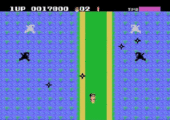
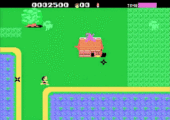
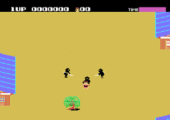


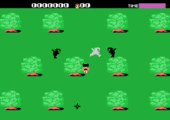
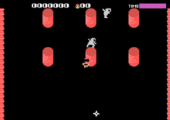

Recent Comments